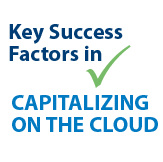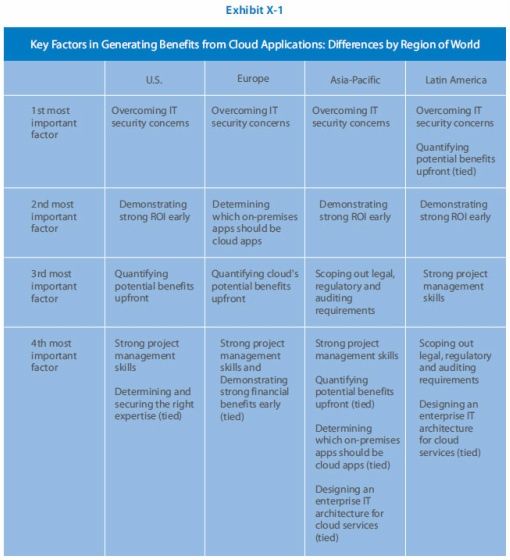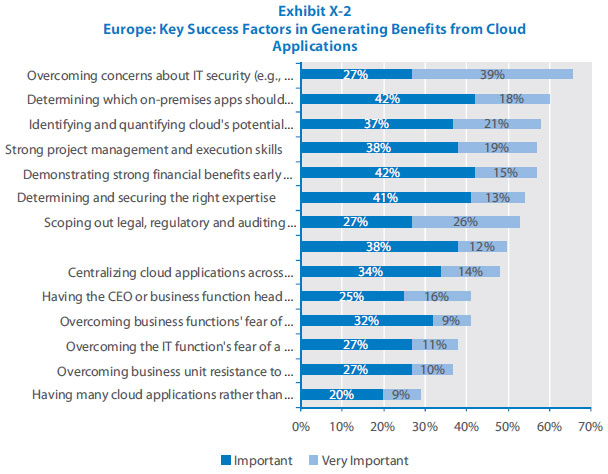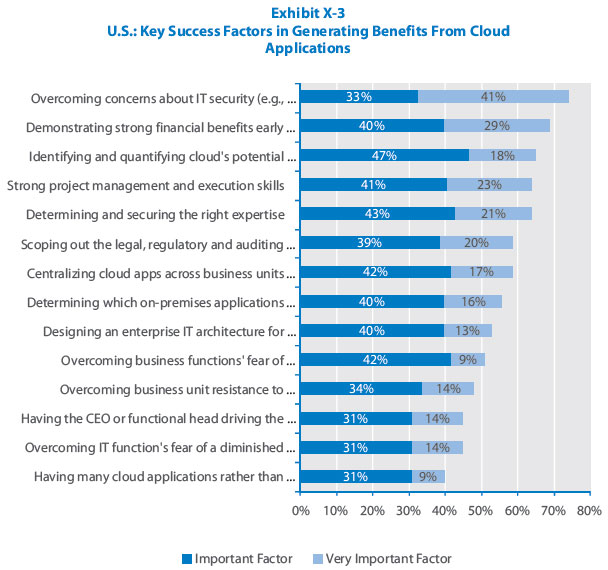Any technology that is as hyped as much as the cloud (remember adulation over artificial intelligence, client-server computing, and the Web in its early years?) generates an almost equal amount of skepticism from those who have seen numerous tech evangelists over time. Cloud computing, too, has drawn its fair share of unabashed advocates and hard-bitten skeptics.
And so when we asked our 606 survey respondents around the world to rate the key success factors in generating benefits from the cloud from a list we provided, the most highly rated success factors were overcoming two fundamental fears about cloud computing (see Exhibit X-1):
And so when we asked our 606 survey respondents around the world to rate the key success factors in generating benefits from the cloud from a list we provided, the most highly rated success factors were overcoming two fundamental fears about cloud computing (see Exhibit X-1):
- That cloud is a highly risky technology from a data security standpoint. Overcoming this fear was rated the most important factor in generating benefits from cloud in every region. In other words, they seem to be indicating to us, the benefits are there – one just has to make sure that the pursuit of those benefits is a safe pursuit.
- That the benefits of cloud are a mirage. The second most important success factor in US, Asia-Pacific and Latin American companies was demonstrating returns on cloud investments earlier in the process. For European companies, the third most important success factor was quantifying the potential benefits of cloud upfront. (It was tied for first in importance in Latin America.) Both issues point to the skepticism over whether cloud computing can deliver on the benefits that have been bandied about everywhere – saving big technology costs, standardizing the ways a company does business around the world, and much, much more.
In the U.S., near the bottom of the list of success factors were two that we thought would carry more weight before we fielded the survey: getting the CEO or head of a business function to drive a cloud initiative rather than the IT organization, and overcoming the IT function’s fear of a diminished organizational role from the adoption of public clouds – i.e., from shifting in-house applications to a cloud vendor’s data center. (See Exhibit X-2 below.)








